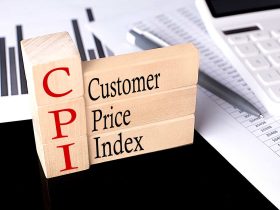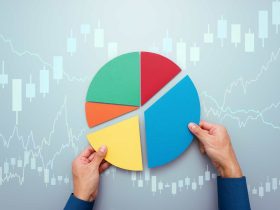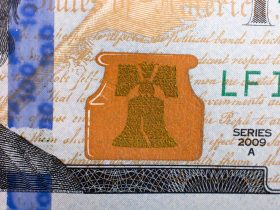Introduction
The economics of REITs as an asset class is influenced by two cycles. There is the space market cycle which has to do with the supply and demand for a particular type of space. For a sale-leaseback specialist such as W. P. Carey (NYSE:WPC), space market considerations would likely include input from trade partners that would like to free up capital to redeploy in other areas of their business. The second type of cycle is the capital market cycle. This relates to the level of investor demand for real estate assets and the valuations at which they trade. Unsurprisingly, the capital market cycle is impacted by the direction and level of interest rates. This article is focused on the capital market cycle and whether an investment in W. P. Carey’s stock is justified in light of the current elevated interest rate environment. In particular, we review the capitalization rate and its spread to the cost of capital. In estimating the cost of capital, we will form a view on the cost of equity capital and evaluate the total return that can be obtained at today’s price compared to the cost of equity capital estimate. At the end of the article, a conclusion is offered and an investment recommendation presented.
Source: Investing in REITs, Fourth Edition, Ralph L. Block. Published by John Wiley & Sons, Inc. 2012.
Spread Investor
W. P. Carey is a spread investor. W. P. Carey acquires a company’s real estate and then leases it back to them on a long-term, triple-net basis. To finance the purchase of the real estate, they access debt and equity markets at a lower cost than the rental revenue they earn from the leaseback. The tenant takes care of substantially all of the costs associated with operating and maintaining the property, including real estate taxes and property insurance. W. P. Carey simply collects rent and profits from the spread between the rental income earned and the cost of the capital used to acquire the real estate.
For a REIT, this spread can be calculated as the difference between the capitalization rate, or cap rate, and the cost of capital. The cap rate is the net operating income divided by the value of the assets and the cost of capital can be decomposed into the cost of debt, the cost of equity and the relative weights of each form of capital employed in the business.
Let us first estimate the cap rate.
Capitalization Rate
Please take a look at Table 1 for the implied capitalization rate for the Diversified REIT sector for the last seven quarters.
| Table 1: Implied Cap Rate for Diversified REITs | |
| Q4 2021 | 5.7% |
| Q1 2022 | 5.7% |
| Q2 2022 | 5.8% |
| Q3 2022 | 6.6% |
| Q4 2022 | 6.4% |
| Q1 2023 | 7.1% |
| Q2 2023 | 8.0% |
Source: Nareit 2023 Q2 T-Tracker
There has been a steady upward trend in cap rates for the diversified REIT sector. If we take the average of the two recent quarters, we arrive at average cap rate for the current half year at 7.54%. To this estimate, we should probably consider some adjustments. W.P. Carey has meaningful exposure to Europe and cap rates have not yet shown the same trajectory in Europe as they have in the U.S. In the recent earnings call, the CEO echoed similar sentiments and remarked that transactions in the first half of the year were executed at a cap rate of 7.3%. We shall use this cap rate for our analysis.
For W. P. Carey to earn economic profit, their cost of capital must be less than 7.3%. Let us now turn our attention to the cost of capital for W. P. Carey.
Cost of Capital
In order to calculate the cost of capital, we have to calculate the cost of debt, the cost of equity and scale each cost to the extent they are used in the business. Let us review the capital structure to see how much debt versus equity is being employed by W.P. Carey. Please take a look at Table 2.
| Table 2: Capital Structure ($ in thousands) | ||
| Form | Value | % |
| Debt | $ 8,762,686 | 37.7% |
| Equity | $ 14,451,163 | 62.3% |
| Sum | $ 23,213,849 | 100.0% |
Source: Q2 2023 Earnings Supplement
Now that we have the relative weights, we now look at each source of capital and estimate the cost. Please take a look at Table 3 for the cost of equity. There are different methods and philosophies around calculating the cost of equity. We use the Capital Asset Pricing Model (CAPM) in which we essentially add a spread to the risk-free rate and scale the spread by the volatility of a particular stock.
| Table 3: Cost of Equity | |
| β | 0.79 |
| Risk free rate | 4.29% |
| Equity risk premium | 4.40% |
| Cost of equity | 7.76% |
Source: The Beta statistic and the 10-year Treasury is from Yahoo! Finance on September 11, 2023
The beta statistic measures the volatility with respect to the market. The beta is 0.79 implies that W.P. Carey’s stock is less sensitive than the market. Conceptually, this is justified since W.P. Carey’s revenue stream is secured by counterparties that are often investment grade tenants. It is for this reason that triple-net lease REITs are sometimes considered bond-like investments and are frequently classified as a defensive holding. Moving on to the next statistic, the risk-free rate. I use the 10-year Treasury which is a frequently used proxy for the risk-free rate. The last input is the equity risk of 4.40 % reflecting the most recent monthly data coming from Aswath Damodoran at NYU. This is well within the historic range. The cost of equity arrived at using this approach is 7.76 %.
Now that we have a cost of equity, let us now estimate the cost of debt. Please take look at Table 4 in which we provide the issuer rating for W.P. Carey and the median yield for similarly situated fixed-income investments.
| Table 4: Issuer Rating and Cost of Debt | ||
| Description | Rating/Yield | Outlook/Time Horizon |
| Standard & Poor’s Rating Services | BBB+ | Stable |
| Moody’s Investor Service | Baa1 | Stable |
| Corporate (Baa/BBB) Median Yield | 5.75% | 10 year |
Source: Q2 2023 Earnings Supplement, Fidelity.com
The implication of the cost of debt is that should W. P. Carey wish to secure or refinance debt at about the 10-year tenor, it would be facing a cost of debt of 5.75%. This does not mean that their interest expense is going to be exactly 5.75% of their long-term debt because fixed-rate debt could have originated at a different time when interest rates were lower. In general, businesses will be slow to refinance debt in an inflationary environment to take advantage of previous interest rate regimes and will be quick to refinance debt in a declining interest rate environment to take advantage of lower available interest rates. Because of this, the actual cost of debt will be less. Nevertheless, W.P. Carey has a 2.45% due February 2032 priced at $77.25 that exchanged hands at a 5.93% yield on September 8th. The issue is callable so that would lend support to our 5.75% estimate.
Now that we have a cost of debt, the cost of equity and the weights of each in the capital structure, we can calculate the weighted average cost of capital. Please take a look at Table 5.
| Table 5: Weighted Average Cost of Capital | |
| Weight of equity | 62.3% |
| Weight of debt | 37.7% |
| Cost of equity | 7.76% |
| Cost of debt | 5.75% |
| WACC | 7.00% |
The tax shield normally included in the calculation of the weighted cost of capital is ignored because REITs generally do not pay taxes at the corporate level. Additionally, W. P. Carey does not have any preferred shares outstanding.
In Table 6 we quantify the amount of the value that is created by W. P. Carey by subtracting the cost of capital from the cap rate.
| Table 6: Cap Rate minus WACC | |
| Cap rate | 7.30% |
| WACC | 7.00% |
| Difference | 0.30% |
In the current macroeconomic environment, W. P. Carey is able to generate value to the tune of 30 basis points.
A REIT creating value is only part of the picture. While it is necessary condition for a potential investment, it isn’t a sufficient one. We also have to ask to whom does that value accrue to? Fixed income holders? Management? Equity investors? As equity investors with minority interests, we want to make sure that at least some of that value created shows up in our account.
To estimate how much value is created on behalf on equity investors, we will revisit the cost of equity calculated previously.
We estimated the cost of equity using CAPM which is a statistical way of ascertaining the cost of equity. There are other methods to estimate the cost of equity. Also, cost of equity is the terminology used from the company’s perspective. It is the cost for them to obtain equity capital. From the investor’s point of view, the cost of equity is the required rate of return for an investment. And for many investors, particularly REIT investors, the required rate of return has two components: the current dividend yield and the growth rate of the dividends.
Please take a look at Table 7 where we look at the total return as the current dividend yield plus five-year growth rate as supplied by Seeking Alpha.
| Table 7: Total Return | |
| Dividend yield | 6.70% |
| Dividend growth rate | 1.03% |
| Total Return | 7.73% |
Source: Seeking Alpha on September 11 2023
In the next Table, we compare the total return just presented to the cost of equity presented in an earlier table.
|
Table 8: Total Return minus Cost of Equity |
|
| Total return | 7.73% |
| Cost of equity (from Table 3) | 7.76% |
| Difference | -0.03% |
We can see from Table 8 that there is currently a negative value of three basis points. Had there been a minimal positive difference, that would not have changed the investment picture. You want to see a wide, positive difference as a signal that there is an adequate margin of safety in the investment. An adequate margin of safety is important in an analysis like this in which a small change in one variable can exert a meaningful difference in the results.
A second takeaway from the foregoing might be that the stock appears efficiently priced by the market.
Conclusion
The spread between the cap rate and cost of capital is positive and a welcome sign for W. P. Carey in particular and probably other REITs in the diversified sector as well. While W. P. Carey creates value as a business, an investment in the equity is not as compelling. The cost of equity estimated using CAPM can be thought of as an opportunity cost and the total return that can be obtained at today’s price does not meet the opportunity cost hurdle. There are factors that can change this investment picture. The factors that can change the investment picture that are beyond management’s control include changes to the risk-free rate and the equity risk premium. The factors that can change the picture that is within management’s sphere of influence include the value of dividends paid per share and the rate of growth of the dividends. Of the two, a modest increase in the dividend growth rate would be a welcome development.
Read the full article here












Leave a Reply